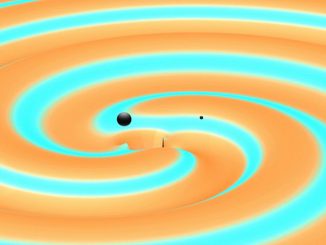
The Event Horizon Telescope a globe-spanning radio telescope array that captured the first images of a black hole’s shadow last year, has also allowed astronomers to resolve fine details of a jet blasting away from the supermassive black hole at the heart of a distant quasar.
Known as 3C 279, the quasar is some five billion light years away in the constellation Virgo. It hosts a supermassive black hole a billion times heavier than the Sun that shoots out jets at nearly the speed of light.
Combining data captured by multiple telescopes in 2017, the EHT was able to achieve a resolution of 20 micro-arcseconds, equivalent to an ability to distinguishing an orange on the surface of the moon. For 3C 279, that translated into resolving structures less than one-light year across.
That level of clarity allowed researchers to follow one jet down to the accretion disc around the black hole at the core of 3C 279, showing an unexpected twisted shape at its base and possible indicators of the poles of the accretion disc.
“For 3C 279, the combination of the transformative resolution of the EHT and new computational tools for interpreting its data have proved revelatory,” said Avery Broderick, an astrophysicist at the Perimeter Institute. “What was a single radio ‘core’ is now resolved into two independent complexes. And they move. Even on scales as small as light-months, the jet in 3C 279 is speeding toward us at more than 99.5 percent of light speed.”
The video below shows the motion of the jet over a few days:
A paper describing the observations, led by Jae-Young Kim, a researcher at the Max Planck Institute for Radio Astronomy (MPIfR) in Bonn, was accepted for publication in Astronomy & Astrophysics.
EHT observation windows occur once a year during early spring in the northern hemisphere, but the March-April 2020 campaign was canceled in the wake of the COVID-19 coronavirus pandemic. Instead, researchers are plowing through data collected in 2017 and 2018 and hope to resume observations next year after upgrading the EHT network.
“The EHT array is always improving,” said Shep Doeleman, founding director of the EHT collaboration. “These new quasar results demonstrate that the unique EHT capabilities can address a wide range of science questions, which will only grow as we continue to add new telescopes to the array. Our team is now working on a next-generation EHT array that will greatly sharpen the focus on black holes and allow us to make the first black hole movies.”



